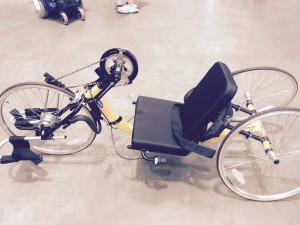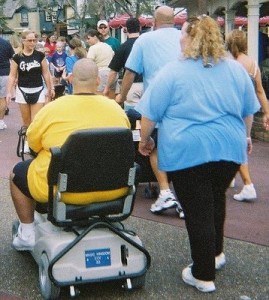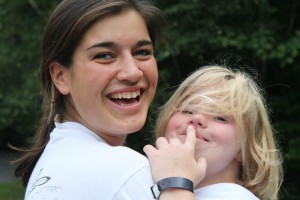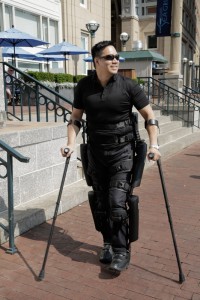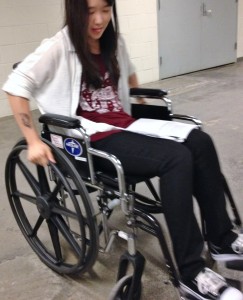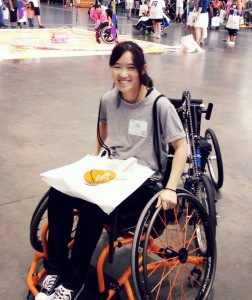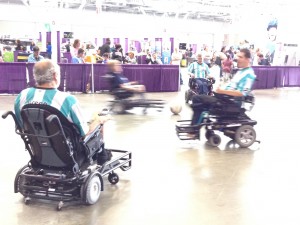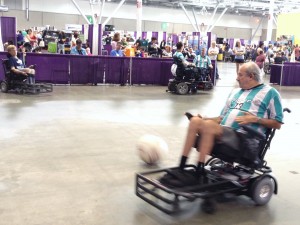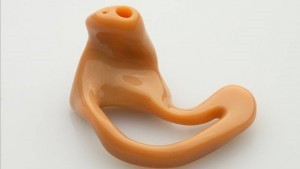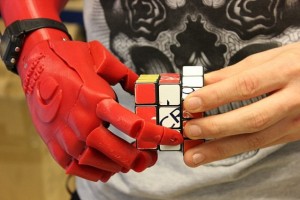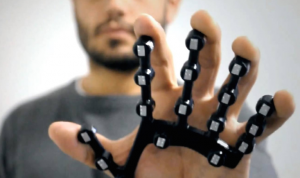2 weeks ago, I attended the Abilities Expo, which is an event that showcases assistive technologies and adaptive activities to the community. There were all kinds of technologies, ranging from a robotic arm that can attach to a wheelchair to a light board to be used by children with cognitive disabilities as an educational game. However, most of what I ended up spending my time exploring were the technologies involved in adaptive sports.
Racing Wheelchairs:
One of my first stops was to a booth that had different types of racing wheelchairs. There were many different designs on display. I got to demo one type that was much lower to the ground than a normal wheelchair, had three wheels, and used hand-pedals to move forward.
The chair can go quite fast, and I found it easier to drive around than the hospital wheelchairs we tried out during our wheelchair lab. Getting to actually test out the different equipment they had on display gave me a good opportunity to think about design considerations when creating a product.
Power Soccer:
The most exciting part of the Expo for me was getting to see a demonstration of power soccer, which is soccer adapted for wheelchair users.
To play, a cage-like object called a footguard is attached to everyone’s wheelchair which is used both to hit the ball more easily and to provide protection. A ball larger than a normal soccer ball is used in order to adapt the game more for the way the ball is moved around the field. I especially liked a move some of the players performed where they would rotate their chair in a circle quickly to gain speed before hitting the ball, which launched the ball down the field.
It was interesting to listen to the announcer of power soccer talk about what the sport meant to him. A disability can often feel like a very limiting thing, and there are a lot of opportunities that seem closed off. But power sports allow people with disabilities to have teammates, to work together with friends, and to have a fun time engaging in competition. It’s amazing what technology in conjunction with great people can do to improve the lives of people with disabilities.
